Chapter2 Application layer
2.1 Principles of Applications
Processes communicating
process: program running within a host
- within the same host, two processes communicate using inter-process communication(defined by OS)
- processes in different hosts communicate by exchanging messages
client process: process that initiates communication
sever process: process that waits to be contacted
Sockets
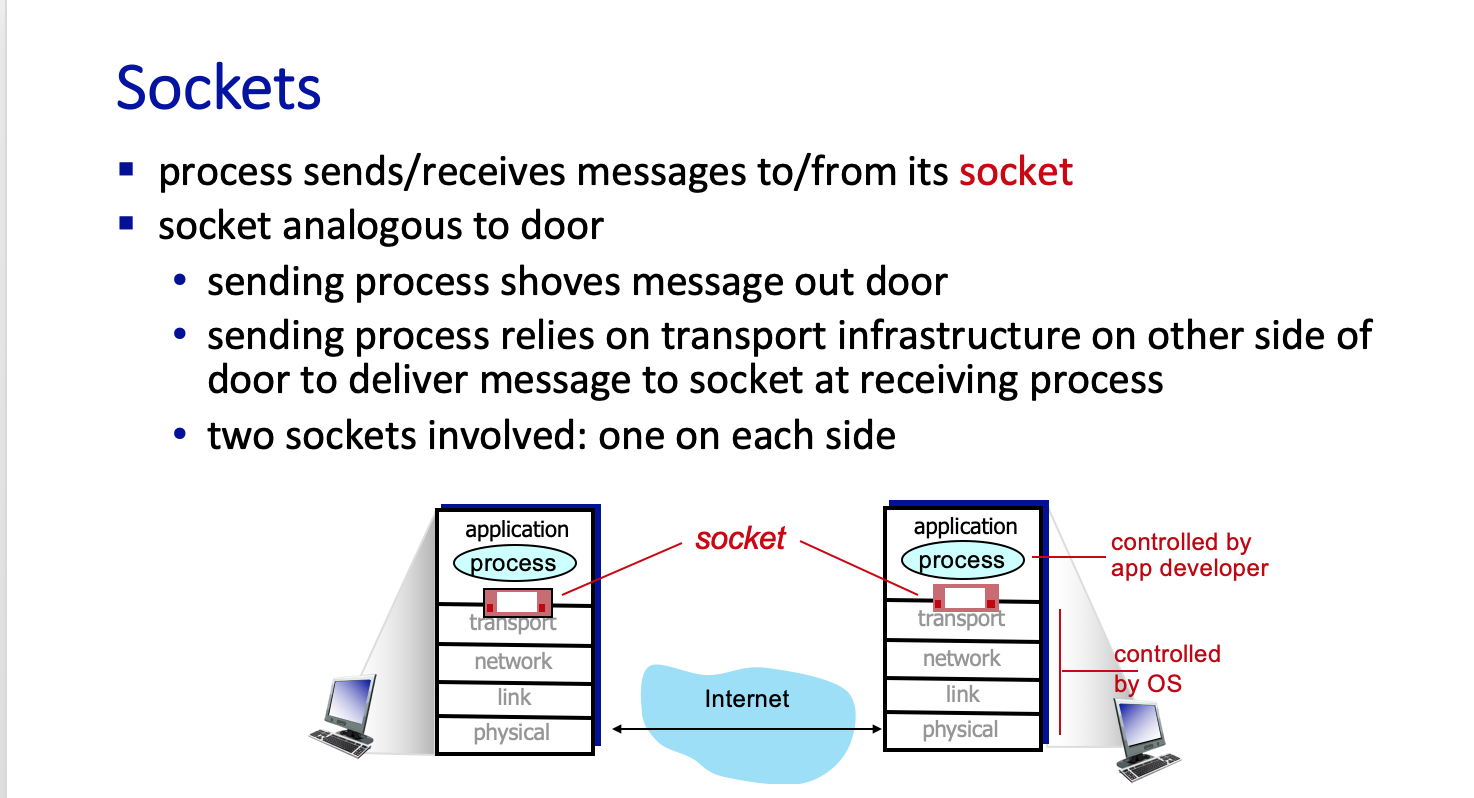
2.2 Web and http
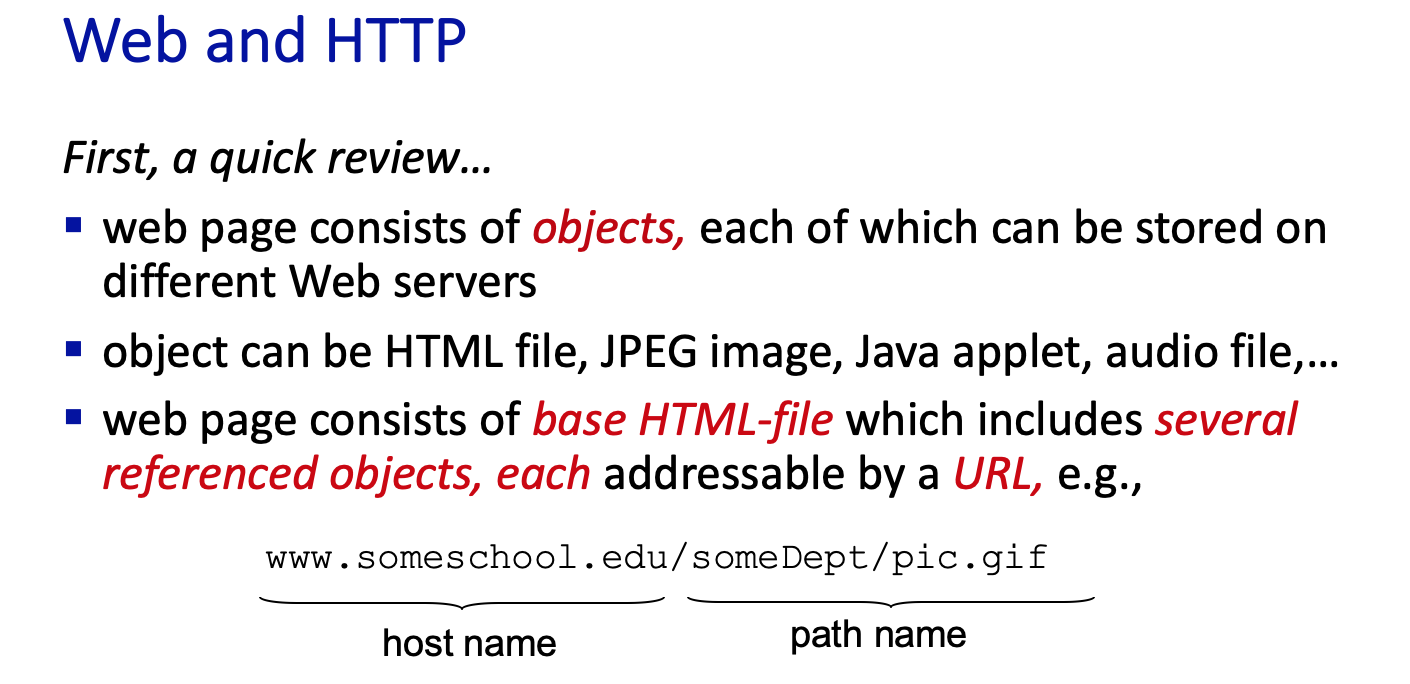
HTTP
HTTP: hypertext transfer prototol use port 80
- web's application-layer protocol
- client/server model:
- client: browser that requests, receives, (using HTTP protocol) and "displays" Web objects
- server: Web server sends (using HTTP protocol) objects in response to requests
- HTTP uses TCP
- HTTP is "stateless": server maintains no infrmation about past client requests
maintaining user/server state: cookies
when initial http requests arrives at site, site creates:
- unique ID(aka "cookie")
- entry in backend database for ID
- subsequent HTTP requests from user to this site will contain cookie ID value, allowing site to "identify" the user
conditional get If-Modified-Since: Wed, 09 Sep 2020 16:06:01 -0700
Goal: don't send object if browser has up-to-date cached version(client have a cached copy of the object)
2.3 Email, SMTP, IMAP
three major Components
- user agents
- mail servers
- simple mail transfer protocol: SMTP
SMTP: simple mail transfer protocol, Pushes email from a mail client to a mail server(use port 25)
IMAP: pull email from mail sever to mail client
2.4 DNS (domain name system)
root name servers: incredibly important internet function
Top-Level Domain servers: responsible for .com .org, .net, .edu, .aero, .jobs, .museums, and all top-level country domains, e.g: .cn, .uk, .fr, .ca
authoritative DNS servers: organization's own DNS server, providing authoritative hostname to IP mappings for organization's named hosts
local DNS name servers: when host makes DNS query, it is sent to its local DNS server
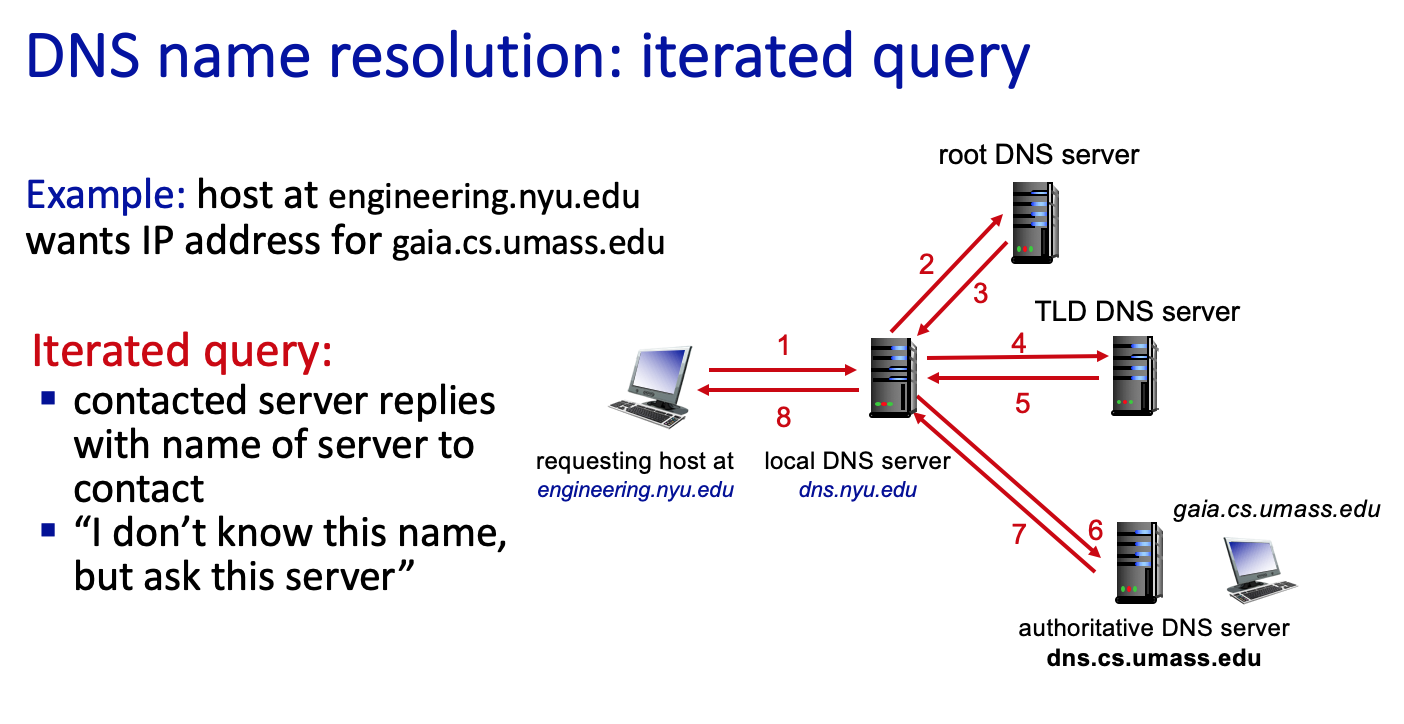
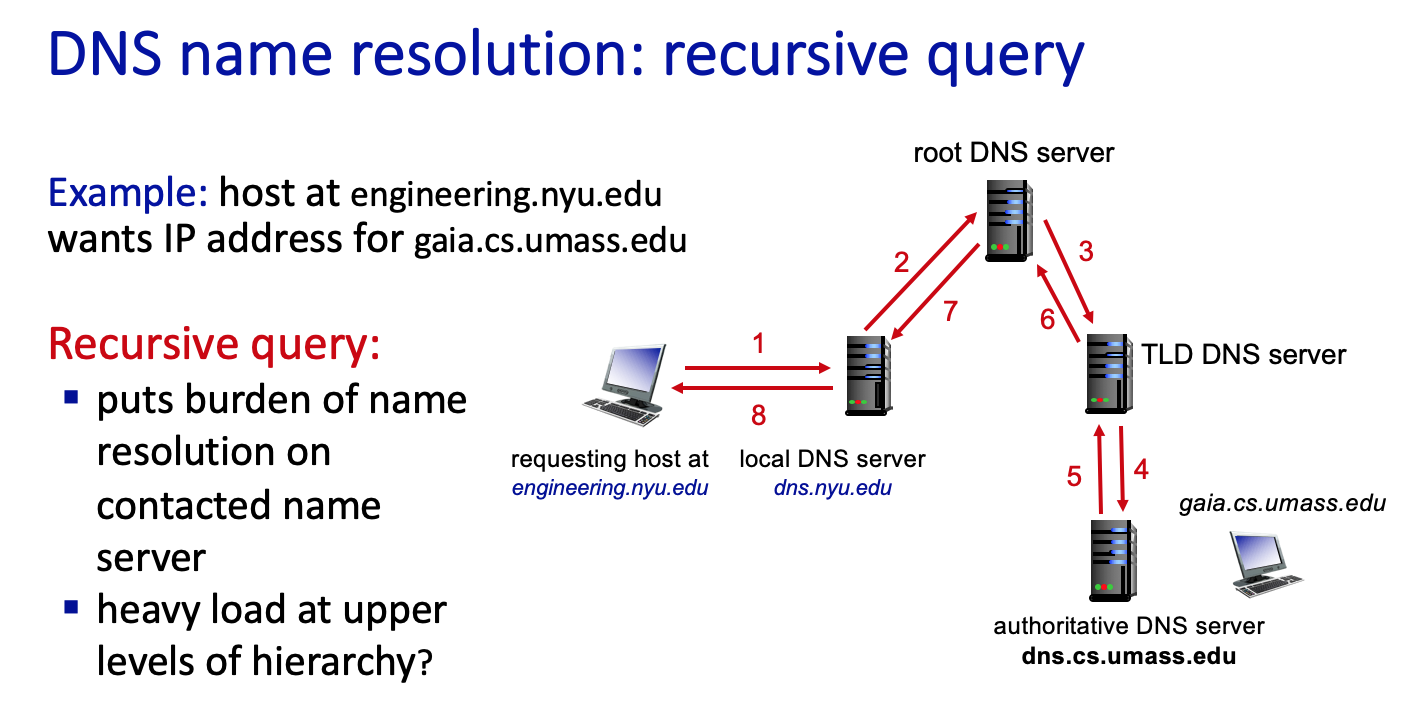
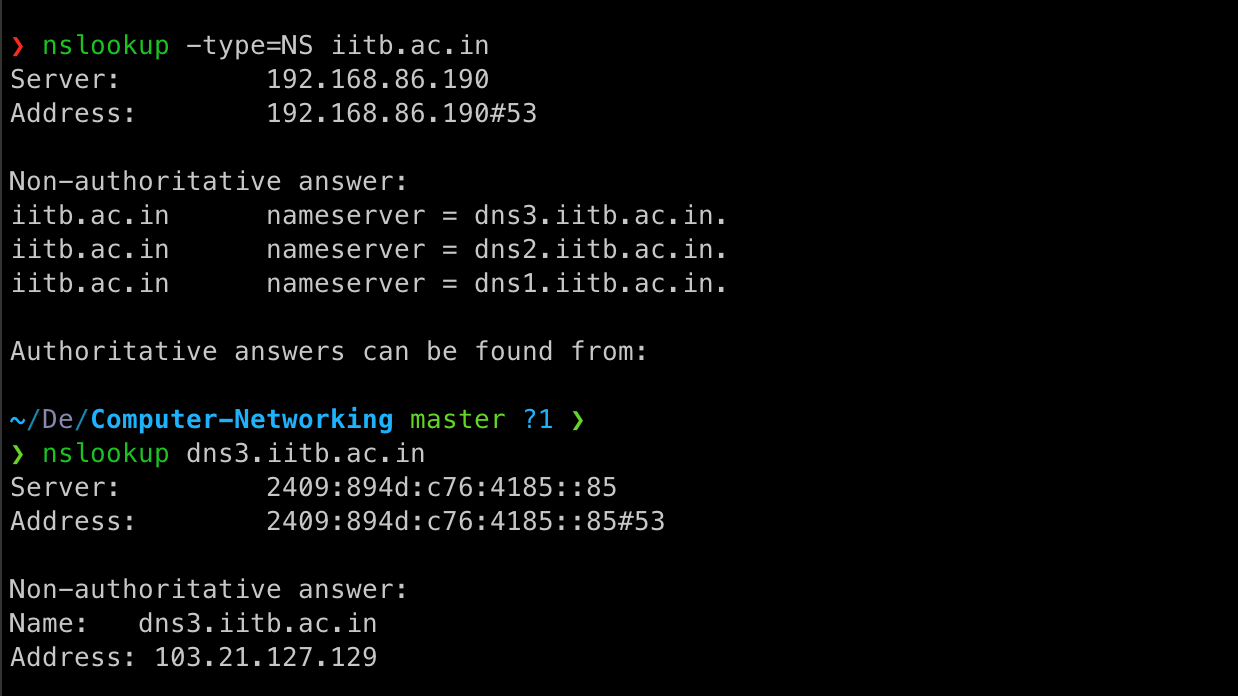
nslookup -NS domain_name can return the authoritative DNS of the domain_name
nslookup domain_name can return the ip of the domain_name
2.5 Sockets programming
socket programming with UDP
UDP client:
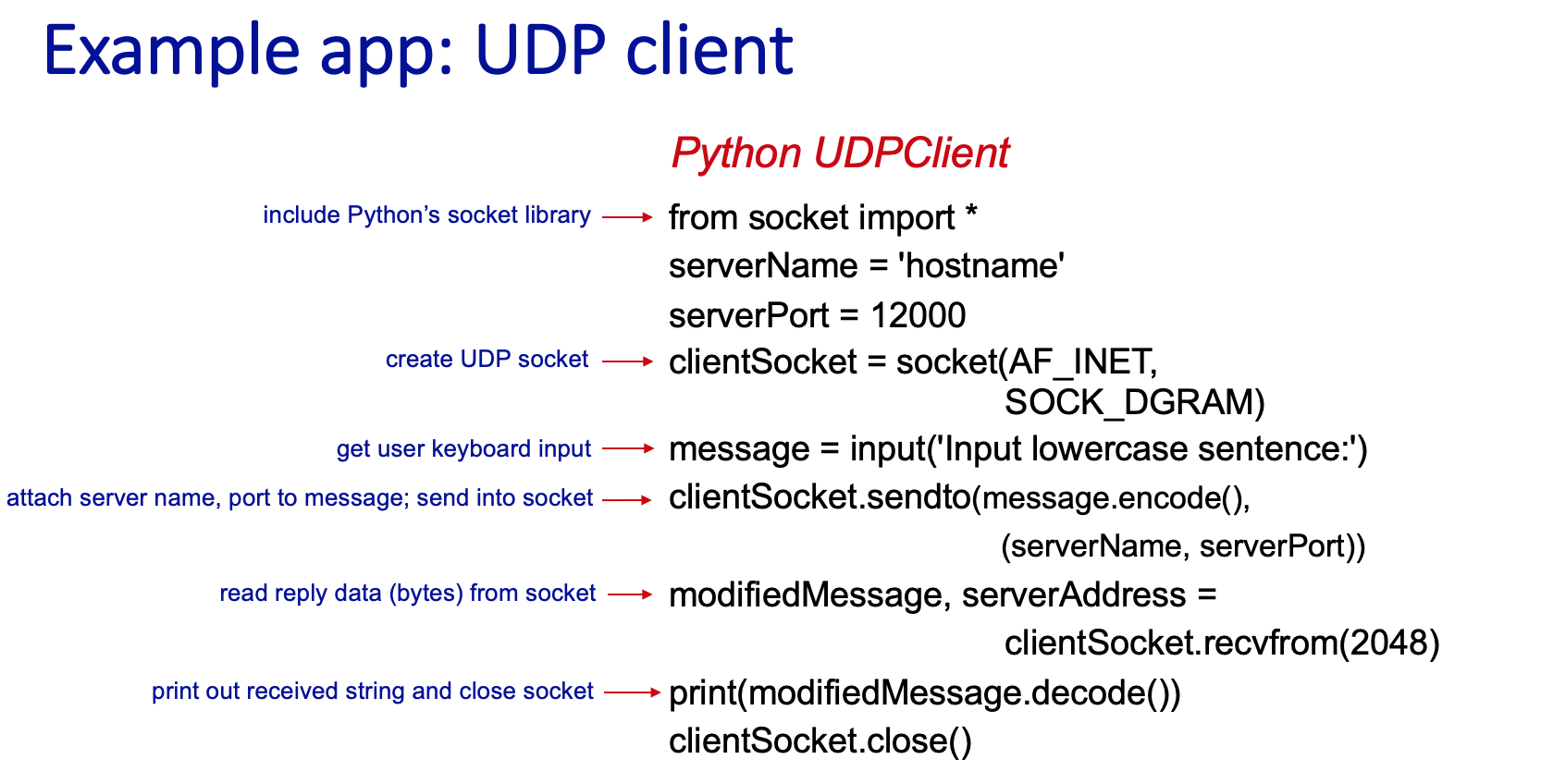
UDP server:
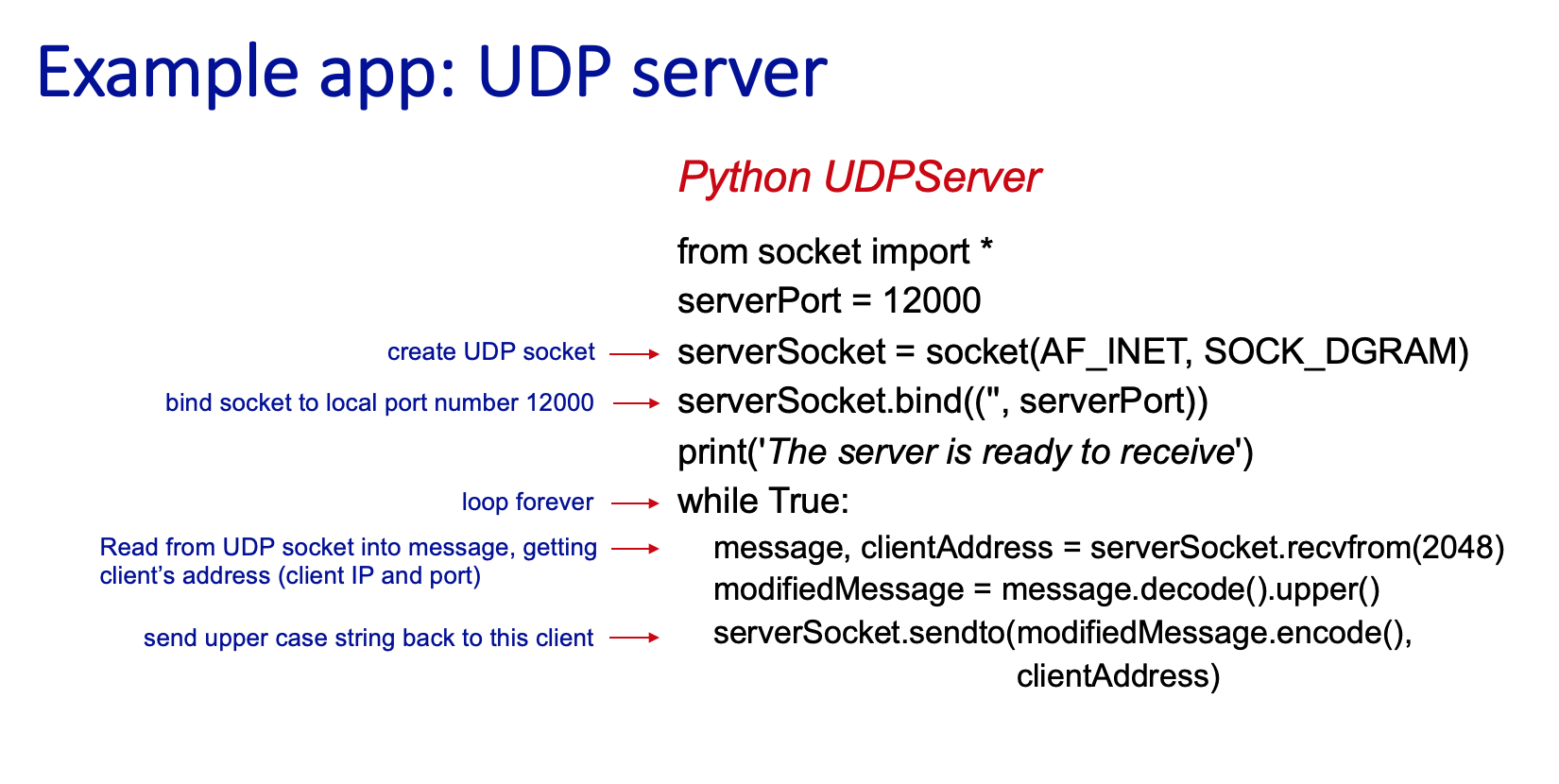 UDP: no 'connection' between client and server
UDP: no 'connection' between client and server
- no handshaking before sending data
- sender explictly attachs IP destination address and port to each packet
- receiver extracts sender IP address and port from received packet
socket(AF_INET, SOCK_DGRAM) creates this type of socket
provides unreliable transfer of a groups of bytes (“a datagram”), from client to server
data from different clients can be received on the same socket
the application must explicitly specify the IP destination address and port number for each group of bytes written into a socket
socket programming with TCP
TCP client:
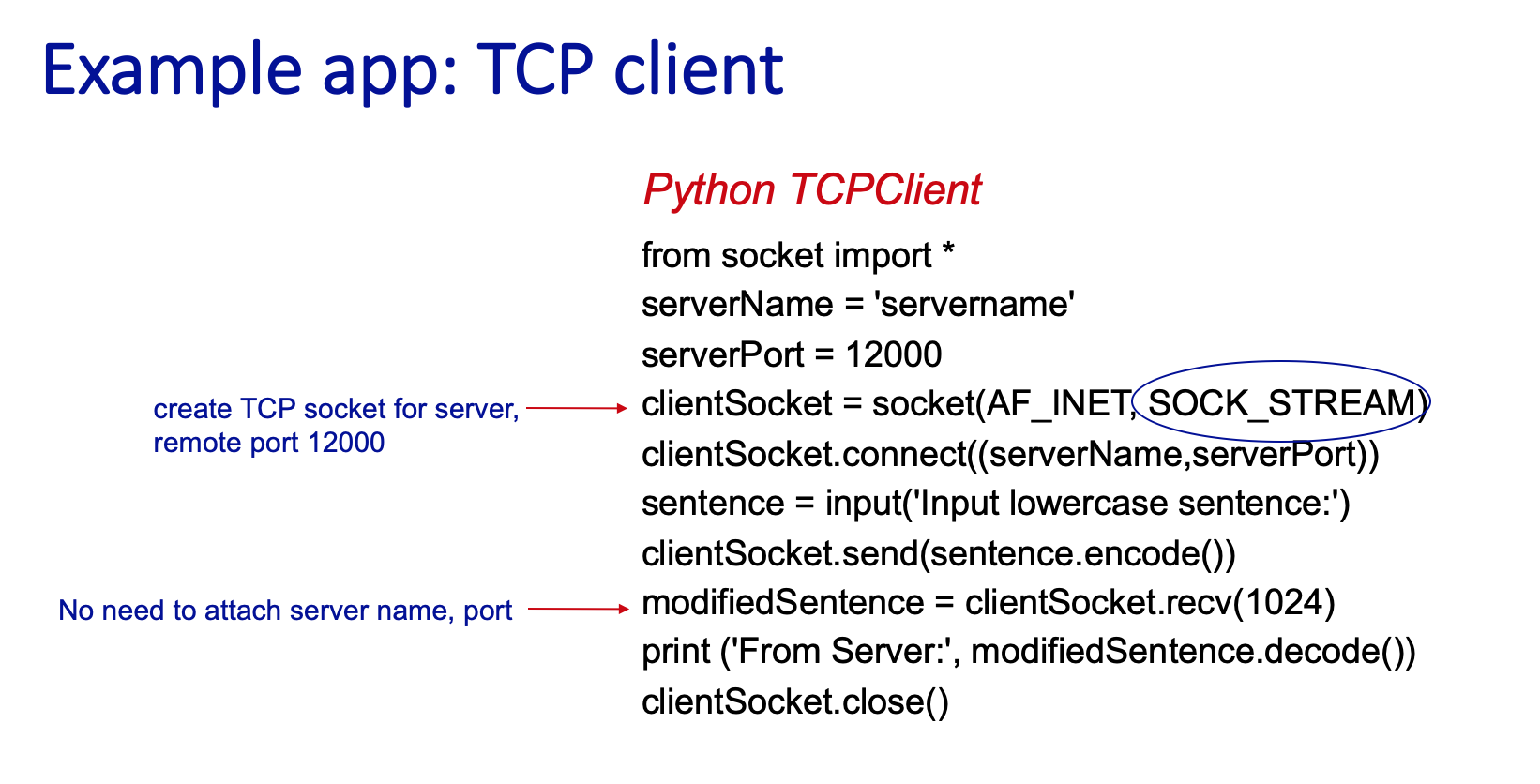
TCP server:
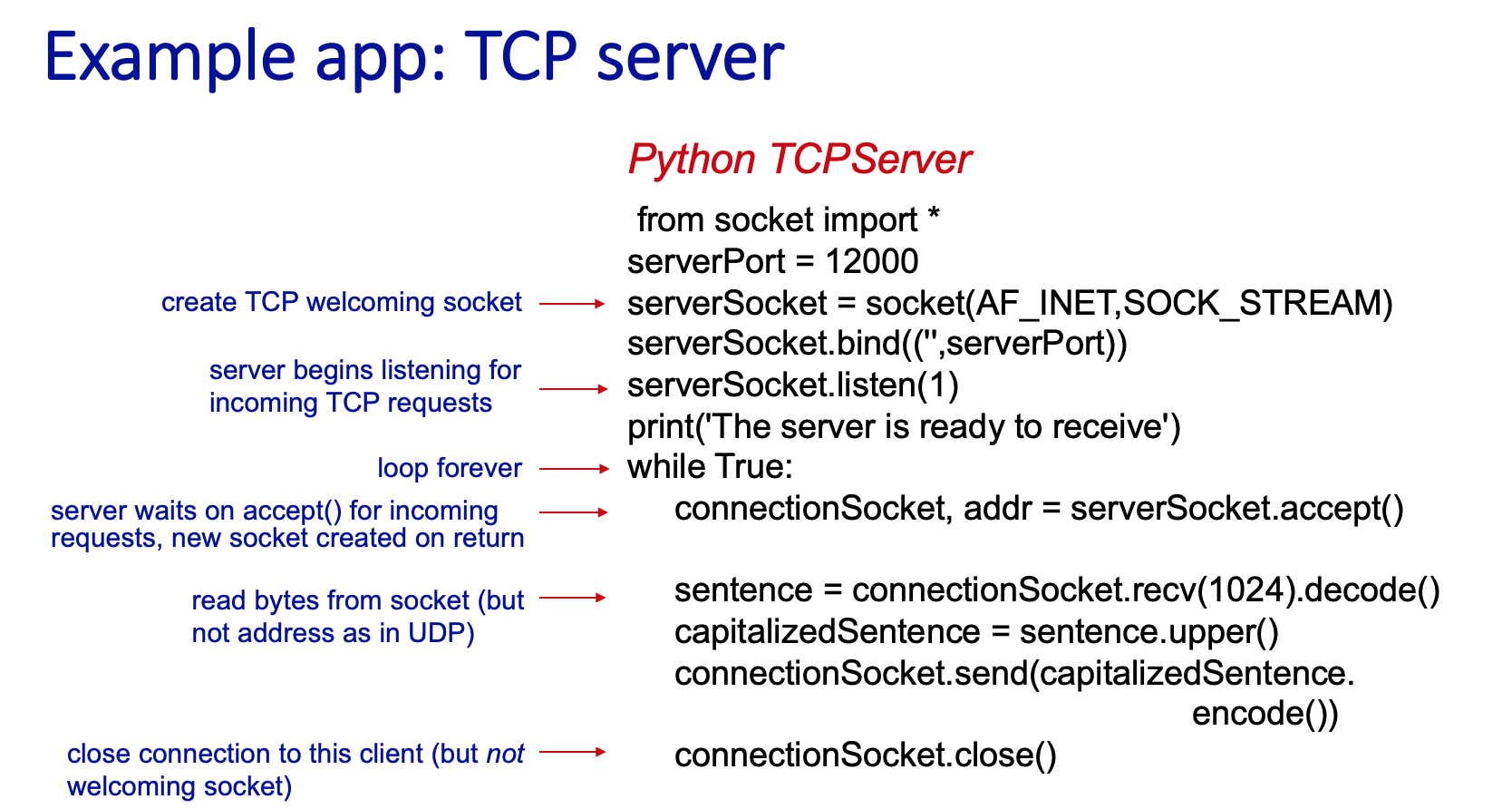
TCP:
socket(AF_INET, SOCK_STREAM) creates this type of socket
a server can perform an accept() on this type of socket
when contacted, the server will create a new server-side socket to communicate with that client
provides reliable, in-order byte-stream transfer (a “pipe”), from client to server
What happens when a socketconnect() procedure is called/invoked?
This procedure creates a new socket at the client, and connects that socket to the specified server.